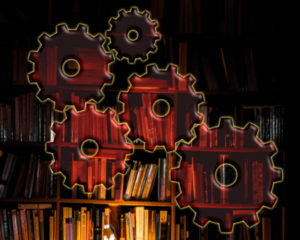 Salman Rushdie’s new collection of essays, The Language of Truth, begins with an ecstatic celebration of the magical tales of old worlds—wonder tales as he would have it. As the foremost magical realist of the East in the West, Rushdie has thrived on collecting his own dreams against the literary trends of the times (realism/formalism/transgressivism/whateverism). Sage advice from a master: “Don’t write what you know unless it is really interesting” or just dream better dreams. Having myself drifted away from reading fiction in recent years (a known trend in the publishing industry) and towards more and more detailed nonfiction, from the mind-control capabilities of cat shit to the mathematical learning algorithms embedded in the universe, I am certainly guilty of exactly what Rushdie rails against (a damned philistine of sorts), though I am equally skeptical of the Knausgård-style auto-fiction that is recently idealized as a contemporary answer to the vexing question of what new literary hell we deserve.
Salman Rushdie’s new collection of essays, The Language of Truth, begins with an ecstatic celebration of the magical tales of old worlds—wonder tales as he would have it. As the foremost magical realist of the East in the West, Rushdie has thrived on collecting his own dreams against the literary trends of the times (realism/formalism/transgressivism/whateverism). Sage advice from a master: “Don’t write what you know unless it is really interesting” or just dream better dreams. Having myself drifted away from reading fiction in recent years (a known trend in the publishing industry) and towards more and more detailed nonfiction, from the mind-control capabilities of cat shit to the mathematical learning algorithms embedded in the universe, I am certainly guilty of exactly what Rushdie rails against (a damned philistine of sorts), though I am equally skeptical of the Knausgård-style auto-fiction that is recently idealized as a contemporary answer to the vexing question of what new literary hell we deserve.
Still, magical realism or Rushdie-an wonder tales are essentially gimmicks for conveying sometimes lofty (say the shaping of thinking by modernity in Gabriel García Márquez or the effects of colonialism in Rushdie’s own works; Devapriya Roy suggests all “global novels,” which is code for New York/American, are idealizations of liberalism that work towards world peace in some suffused sensibility), but also often trivial observations about ancient human traditions. Calling this a cornerstone of truth begs a deeper question about what truths are being exposed. Is it this universality of the desire for power or the vanity of men and women? Is it the threat imposed by female eroticism to the stability of society? Rushdie likes to think these are answered by these olden forms but a most modern mind begs for explanations of a different sort when trying to map them to our most modern experience of society.… Read the rest